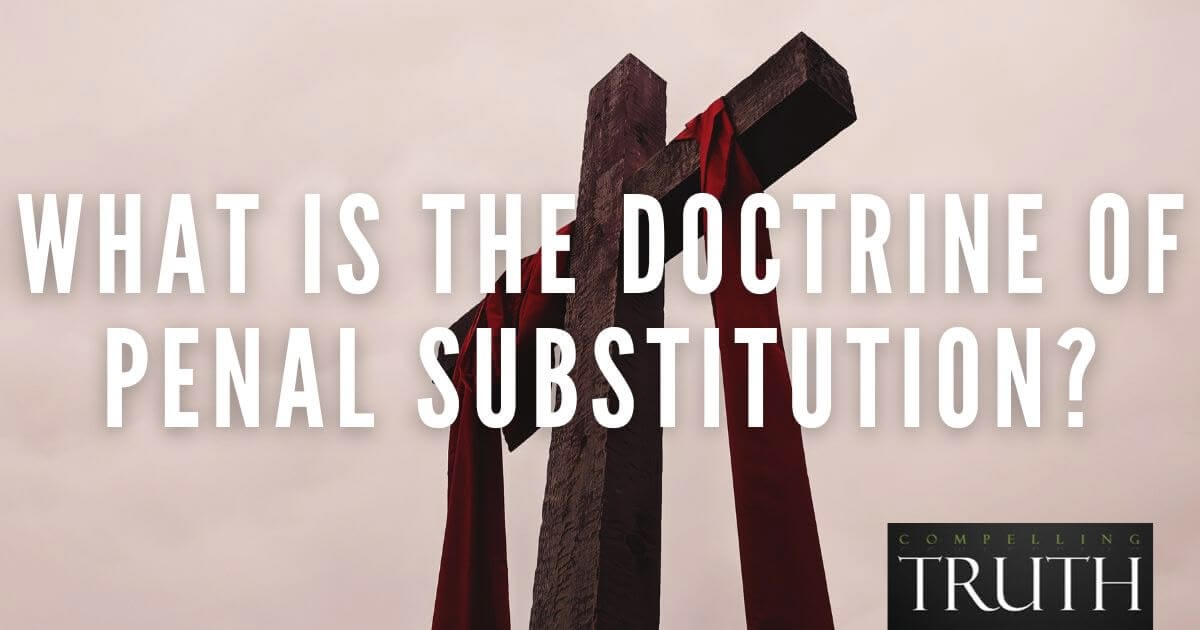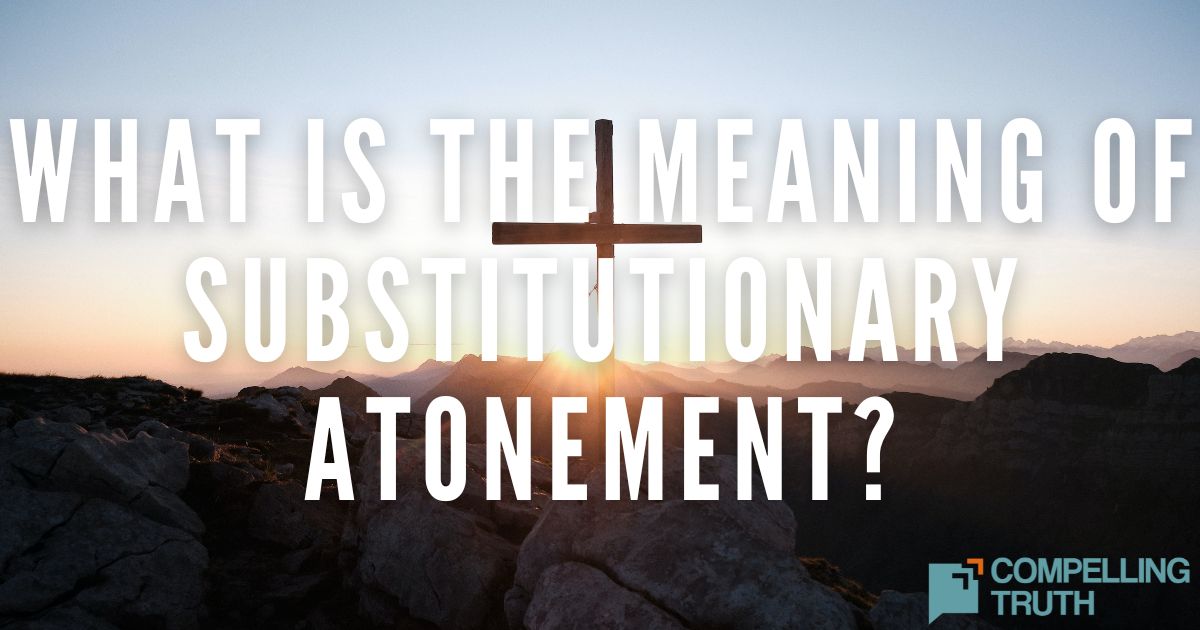Jesus' death on the cross is called the atonement, and for millennia theologians have discussed different ways to describe what Jesus accomplished through His death and resurrection. Christus Victor, Latin for "Christ the Conqueror," is one view of the atonement, often seen in contrast to the Satisfaction Doctrine or the Penal Substitutionary Model. The Christus Victor view of atonement focuses on Jesus' atonement being the way God triumphs over the power of evil in order to liberate humanity from the bondage of sin and death.
The Christus Victor view draws its name from Swedish theologian Gustaf Aulen's book of the same title published in 1931. Aulen emphasized this view by highlighting the early church's Ransom Theory, arguing that it was the prevailing way of understanding the atonement during the patristic period especially when reading the work of Iranaeus. He also showed how both Martin Luther and John Calvin ascribed, at least partially, to this view of atonement as well.
Theologians find support for this view throughout the New Testament. In John 8:34 and 36, Jesus declared, "Truly, truly I say to you, everyone who practices sin is a slave to sin… So if the Son sets you free, you will be free indeed." Thus Jesus declared His intention to set people free from the bondage of sin. Paul also wrote of Jesus freeing people from slavery to elemental spirits into freedom as adopted sons of God in Galatians 4:3–5. "In the same way we also, when we were children, were enslaved to the elementary principles of the world. But when the fullness of time had come, God sent forth his Son, born of woman, born under the law, to redeem those who were under the law, so that we might receive adoption as sons." Furthermore, he wrote to the Corinthians about Jesus' victory saying, "the sting of death is sin, and the power of sin is the law. But thanks be to God, who gives us the victory through our Lord Jesus Christ" (1 Corinthians 15:56–57). Finally, the writer of Hebrews summed up Jesus' atoning work by saying, "Since therefore the children share in flesh and blood, he himself likewise partook of the same things, that through death he might destroy the one who has the power of death, that is, the devil, and deliver all those who through fear of death were subject to lifelong slavery" (Hebrews 2:14–15). These verses explain Jesus as the victor over sin and death who sets His people free from these evil strongholds.
However, this Christus Victor view of the atonement is not the only one the Bible teaches. Satisfaction Doctrine is the idea that Christ's life and death make restitution to God's honor that was offended by humanity's disobedience. This view argues that Christ's death, His ultimate act of obedience, was more honor than He was obliged to give, so this surplus of honor repays God the debt owed by mankind due to sin. Jesus professed to God, "I glorified you on earth, having accomplished the work that you gave me to do" (John 17:4). Jesus taught that God was indeed glorified, or honored, through His perfect obedience. The writer of Hebrews stated that Jesus "was heard because of his reverence. Although he was a son, he learned obedience through what he suffered. And being made perfect, he became the source of eternal salvation to all who obey him" (Hebrews 5:7–9). So the Bible also supports this view of Jesus restoring God's honor through His obedience unto death as explained in Satisfaction Doctrine.
Finally, the Bible also teaches the Penal Substitutionary Model. Isaiah 53:5 explains, "He was pierced for our transgressions; he was crushed for our iniquities; upon him was the chastisement that brought us peace, and with his wounds we are healed." Humanity deserved chastisement, or punishment, for our sins, but Jesus, who lived a sinless life, took that punishment on our behalf. Paul described Jesus' sacrifice as a propitiation, or appeasement, to God. He wrote, "for all have sinned and fall short of the glory of God, and are justified by his grace as a gift, through the redemption that is in Christ Jesus, whom God put forward as a propitiation by his blood, to be received by faith. This was to show God's righteousness, because in his divine forbearance he had passed over former sins" (Romans 3:23ndash;25). When writing to the Colossians, he explained, "having forgiven us all our trespasses, by canceling the record of debt that stood against us with its legal demands. This he set aside, nailing it to the cross" (Colossians 2:13–14). So clearly, Jesus received the punishment we were due, thus satisfying God's demand for justice.
The interesting thing about these three assessments of atonement are how each interpretation answers the primary need in three different worldviews. Some cultures are power–fear based cultures, like many African cultures, that experience the interplay of good and evil spirits and would need Jesus to be the most powerful God who conquers evil spirits in order to feel He is worthy of their worship. Some cultures are honor–shame based cultures, like many Asian and Middle Eastern cultures, that prize honor and would need to see God's honor restored for Him to be worthy of their worship. And Western culture tends to view the world through a guilt–innocence lens and needs God to have enacted justice in order to be worthy of their worship. How wonderful that God is not only a righteous and just judge, and not only a glorified and honored Father, but is also a powerful and victorious conqueror over evil.
The Christus Victor view draws its name from Swedish theologian Gustaf Aulen's book of the same title published in 1931. Aulen emphasized this view by highlighting the early church's Ransom Theory, arguing that it was the prevailing way of understanding the atonement during the patristic period especially when reading the work of Iranaeus. He also showed how both Martin Luther and John Calvin ascribed, at least partially, to this view of atonement as well.
Theologians find support for this view throughout the New Testament. In John 8:34 and 36, Jesus declared, "Truly, truly I say to you, everyone who practices sin is a slave to sin… So if the Son sets you free, you will be free indeed." Thus Jesus declared His intention to set people free from the bondage of sin. Paul also wrote of Jesus freeing people from slavery to elemental spirits into freedom as adopted sons of God in Galatians 4:3–5. "In the same way we also, when we were children, were enslaved to the elementary principles of the world. But when the fullness of time had come, God sent forth his Son, born of woman, born under the law, to redeem those who were under the law, so that we might receive adoption as sons." Furthermore, he wrote to the Corinthians about Jesus' victory saying, "the sting of death is sin, and the power of sin is the law. But thanks be to God, who gives us the victory through our Lord Jesus Christ" (1 Corinthians 15:56–57). Finally, the writer of Hebrews summed up Jesus' atoning work by saying, "Since therefore the children share in flesh and blood, he himself likewise partook of the same things, that through death he might destroy the one who has the power of death, that is, the devil, and deliver all those who through fear of death were subject to lifelong slavery" (Hebrews 2:14–15). These verses explain Jesus as the victor over sin and death who sets His people free from these evil strongholds.
However, this Christus Victor view of the atonement is not the only one the Bible teaches. Satisfaction Doctrine is the idea that Christ's life and death make restitution to God's honor that was offended by humanity's disobedience. This view argues that Christ's death, His ultimate act of obedience, was more honor than He was obliged to give, so this surplus of honor repays God the debt owed by mankind due to sin. Jesus professed to God, "I glorified you on earth, having accomplished the work that you gave me to do" (John 17:4). Jesus taught that God was indeed glorified, or honored, through His perfect obedience. The writer of Hebrews stated that Jesus "was heard because of his reverence. Although he was a son, he learned obedience through what he suffered. And being made perfect, he became the source of eternal salvation to all who obey him" (Hebrews 5:7–9). So the Bible also supports this view of Jesus restoring God's honor through His obedience unto death as explained in Satisfaction Doctrine.
Finally, the Bible also teaches the Penal Substitutionary Model. Isaiah 53:5 explains, "He was pierced for our transgressions; he was crushed for our iniquities; upon him was the chastisement that brought us peace, and with his wounds we are healed." Humanity deserved chastisement, or punishment, for our sins, but Jesus, who lived a sinless life, took that punishment on our behalf. Paul described Jesus' sacrifice as a propitiation, or appeasement, to God. He wrote, "for all have sinned and fall short of the glory of God, and are justified by his grace as a gift, through the redemption that is in Christ Jesus, whom God put forward as a propitiation by his blood, to be received by faith. This was to show God's righteousness, because in his divine forbearance he had passed over former sins" (Romans 3:23ndash;25). When writing to the Colossians, he explained, "having forgiven us all our trespasses, by canceling the record of debt that stood against us with its legal demands. This he set aside, nailing it to the cross" (Colossians 2:13–14). So clearly, Jesus received the punishment we were due, thus satisfying God's demand for justice.
The interesting thing about these three assessments of atonement are how each interpretation answers the primary need in three different worldviews. Some cultures are power–fear based cultures, like many African cultures, that experience the interplay of good and evil spirits and would need Jesus to be the most powerful God who conquers evil spirits in order to feel He is worthy of their worship. Some cultures are honor–shame based cultures, like many Asian and Middle Eastern cultures, that prize honor and would need to see God's honor restored for Him to be worthy of their worship. And Western culture tends to view the world through a guilt–innocence lens and needs God to have enacted justice in order to be worthy of their worship. How wonderful that God is not only a righteous and just judge, and not only a glorified and honored Father, but is also a powerful and victorious conqueror over evil.



